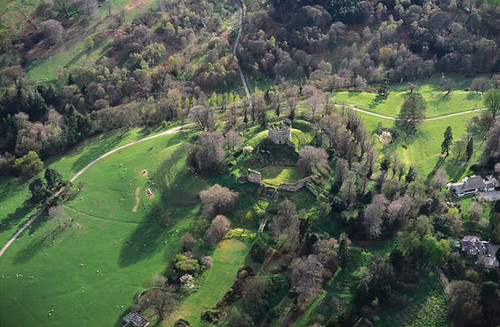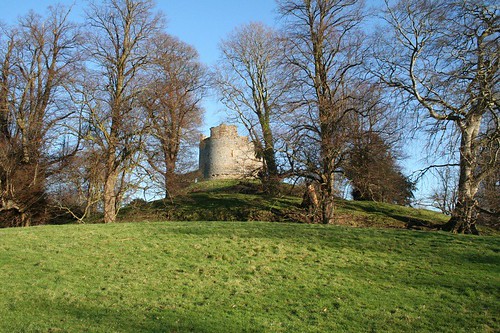Nice Photographs of Hawarden Castle

Hawarden Castle is an impressive stone motte and bailey fortress, founded by Roger de Clifford. Supported by a large motte are the remains of a round keep, with a hall and a large square tower in the walled bailey.
The name Hawarden Castle is probably better known as the grand stately home of W.E. Gladstone, former British Prime Minister, which is not open to the public. The castle was an important structure during the Welsh struggle for independence in the 13th century. At Easter 1282, Dafydd ap Gruffudd attacked Hawarden Castle, thereby starting the final conflict with Norman England, in the course of which Welsh independence was lost. King Edward I's sense of outrage was such that he designed a punishment for Dafydd harsher than any previous form of capital punishment. Dafydd was hanged, drawn, and quartered.
Hawarden's most significant role in the struggle for Welsh independence came in 1282 when it was attacked by Llywelyn's brother Dafydd ap Gruffydd. Angered by King Edward's seeming lack of respect, Dafydd staged a night siege on the stronghold in the month of March. Although he succeeded in capturing the castle and its constable, Roger Clifford, Dafydd's actions forced his brother Llywelyn to become involved in another rebellion against the crown. By the end of the year Llywelyn had been killed, and Dafydd was on the run, only to be captured and executed the following year. Hawarden Castle was retaken by the English king, never again to be the target of a Welsh uprising.

The stone keep remains of the first Norman motte & bailey castle which was destroyed in 1265. It was rebuilt at the end of the 13th century as one of the new North Wales defences. It was slighted in 1647 during the Civil War, but the keep and part of the walls remain.

Hawarden Castle's history continued to be impacted by warfare and devastation into the mid-1600s, when it saw its final action during the Civil War. At first, it was garrisoned by Royalist troops who maintained control of the structure except for a brief time in 1643, and then until March 1646, when the castle was surrendered to Parliamentary forces. After that time, the castle was slighted and never restored, fated to remain in ruin and later to become part of the estates of nearby Hawarden House, erected in 1752.
Although not as well known as other castles in north Wales, Hawarden, along with the nearby castles of Caergwrle and Ewloe, have their own important stories to tell. Such castles are everlasting symbols of Welsh perseverance and Welsh individuality, and reinforce the fact that Wales is indeed a separate entity, despite it's union with Britain.

Hawarden is rich in history. It contains two castles; one built again by King Edward I, the other the home of William Gladstone, four times British Prime Minister. Another town, Caerwys, claims to be one of the smallest towns in Britain with a Royal Charter. Other notable attractions in Flintshire worth visiting are Ewloe Castle, Bailey Hill in Mold, Point of Ayr lighthouse Leeswood Hall’s ‘White Gates’.
Labels: Hawarden Castle







0 Comments:
Post a Comment
<< Home